
Imagine That!
Faculty researchers transform big ideas into real results
New knowledge stems from new ideas. Montclair State faculty researchers have received $10 million in funding from federal and state agencies, and corporate and nonprofit organizations through the third quarter of fiscal year 2019 for fresh thinking that generates real-world benefits. In this issue of Montclair magazine, we take a look at just a handful of the innovative ideas and groundbreaking research taking place on campus – many funded by government grants or private gifts to the University. “The breadth of our research portfolio – from astrophysics and climate change to diversifying New Jersey’s teacher pipeline – is exactly what one would expect from a nationally designated doctoral high-research activity university,” says Vice Provost for Research and Graduate School Dean Scott Herness.
Making history in Antarctica
On sighting land, as scientific drillship JOIDES Resolution approached Chile on its return from Antarctica in March, Earth and Environmental Studies Professor Sandra Passchier was overwhelmed. “I had to adjust to all that color after seeing a landscape of nothing but white, blue and gray for two months,” she recalls.

Passchier, a pioneer in the field of internationally coordinated Antarctic research, and other members of an international team of scientists and crew, made history by retrieving the longest drill cores ever collected from West Antarctica’s isolated Amundsen Sea region.
The cores – which preserve a history of the West Antarctic Ice Sheet’s expansion and retreat – will help scientists predict the potential effects of climate change.
“So many icebergs were around that keeping the drill pipe in the seafloor long enough to make some depth was extremely difficult. But the determination of everybody on the ship was unprecedented. Nobody wanted to give up,” she says.

Their persistence paid off. “I’m really happy with our cores. We recovered a complete West Antarctic record of an important warm period in Earth’s past,” Passchier reports. “We found evidence that the West Antarctic Ice Sheet changed its footprint in the past and responded to climate changes. Now, as a science team, we’re designing a plan on how to extract all the climate information embedded in the sediments.”
Despite appetizing meals, two months aboard ship posed unique challenges – from staying balanced while running on a treadmill on a bouncing ship and living “unplugged” without cell phone or reliable internet service to returning to Chile six days early to get an injured crew member needed medical treatment.

This was Passchier’s sixth Antarctic expedition and her third with the International Ocean Discovery Program (IODP). While the National Science Foundation (NSF) and its international partners funded the IODP, Passchier’s participation in the IODP Expedition 379 was funded through a contract with the IODP’s U.S. Science Support Program at Columbia University.
Exploring character development in scouts
How do adults shape character in young people? For scoutmasters and other adult volunteers, what combination of training and experience helps them build character in scouts? What particular kinds of training enhance character development? Family Science and Human Development professors Jennifer Urban and Miriam Linver hope 2,500 scouts and their adult leaders have answers that will help Boy Scouts of America (BSA) strengthen its mission.
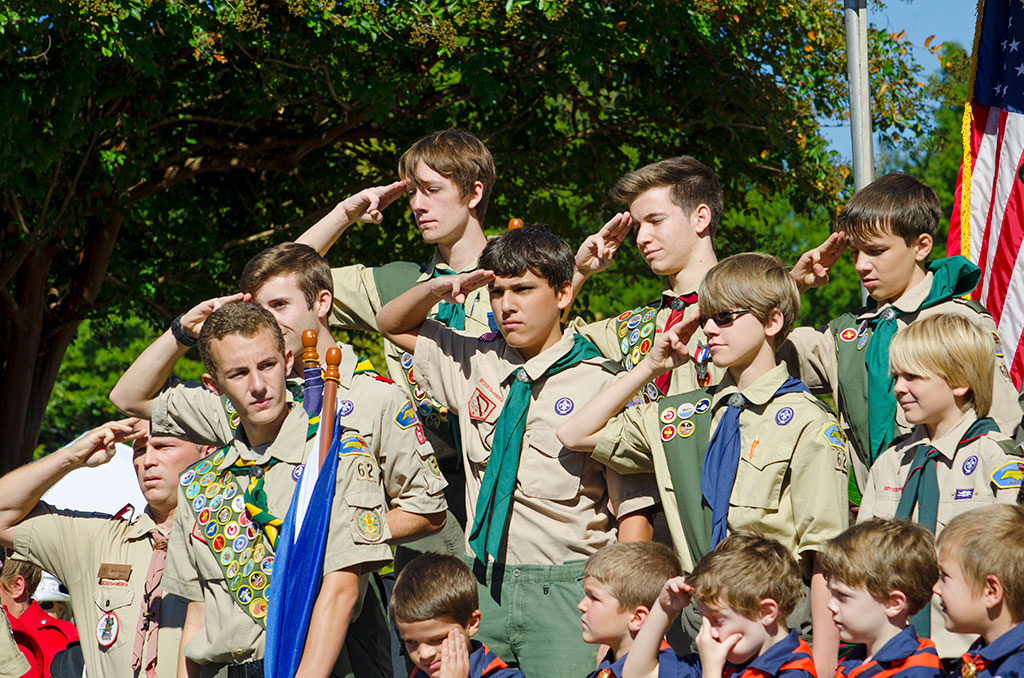
The researchers, who also codirect the Institute for Research on Youth Thriving and Evaluation (RYTE) at Montclair State, have received first-year funding from a two-year, $5.7 million Boy Scouts of America National Character Initiative sub-award funded by the Stephen D. Bechtel Jr. Foundation to support the second phase of the nationwide BSA BEST (Building Evidence in Scouting Together), an ongoing national-scale study exploring the role adults play in youth character development.
“The first phase confirmed that BSA offers a distinctive character initiative that’s deeply rooted in its culture, as well as ideal for exploring and documenting the relationship between adult practice and youth character development,” says Urban.

To understand how adults and scouts work together, Urban, Linver and American Institutes for Research (AIR) BSA BEST partners are currently looking to pinpoint the BSA trainings and adult experiences that lead to the strongest character outcomes in scouts.
“Our combined effort – which includes developing and pilot-testing surveys and interview protocols – has been a success so far,” says Urban. “We’re also conducting in-depth observations of adult volunteer leader trainings, with a focus on BSA’s intensive leadership Wood Badge training courses.”
While the team expects to issue a preliminary report by early fall, Urban notes that exciting patterns and findings are already emerging. “We expect, for instance, that there are several different adult leader profiles that lead to positive youth outcomes. We’re excited to find out what they are so we can help BSA foster strong adult leaders.”
Aiding discovery of distant black holes
When black holes collide or neutron stars merge, they produce minute ripples in space-time measurable by gravitational-wave detectors. Since 2015, when LIGO – the Laser Interferometer Gravitational-wave Observatory – measured the first gravitational wave from colliding black holes, four more black hole collisions have been detected, as well as a binary neutron star merger. The significance of these discoveries, which confirmed century-old predictions made by Albert Einstein, was acknowledged by the 2017 Nobel Prize in Physics.

Physics and Astronomy Professor Rodica Martin, who, along with Physics Professor Marc Favata, is a member of the LIGO team, is now studying the optical properties of materials that can be used to develop the next generation of highly sensitive gravitational-wave detectors.
“With more sensitive instruments, LIGO can detect gravitational waves from sources that are much further away, or that are too weak to observe with current detectors, giving us new insights on the dynamics of the cosmos,” says Martin.
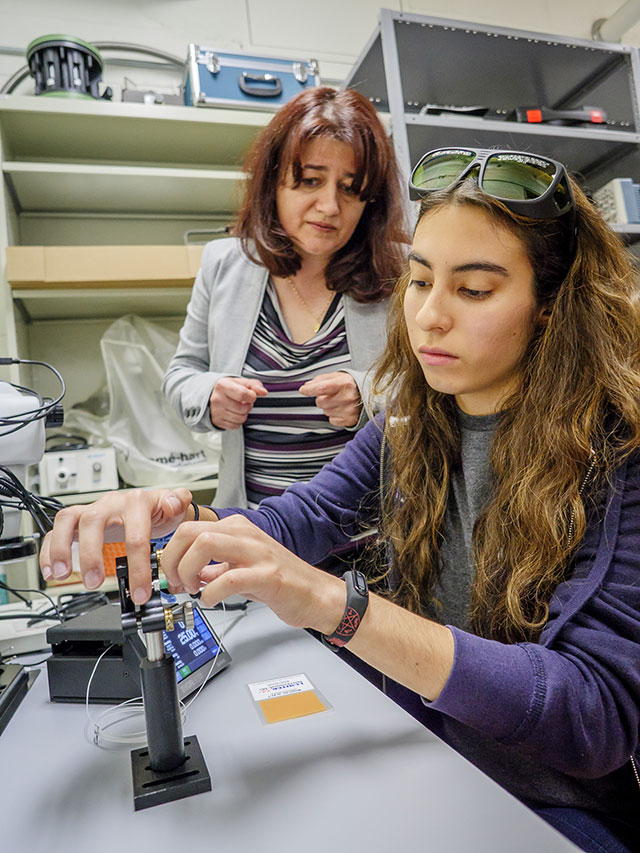
Through tabletop optics experiments, she and a team of students are investigating new magneto-optical materials for the detectors’ Faraday isolators – a key component of the gravitational-wave detectors. Early identification of suitable materials for next-generation Faraday isolators is key to developing gravitational-wave detectors able to observe nearly all the stellar-mass black hole mergers in the universe – and facilitate even more precise tests of Einstein’s theory of relativity.
According to Martin, her NSF-funded project is progressing well. “We’ve obtained preliminary results on several materials and hope to be ready to report more complete findings in the months ahead.”
Diversifying New Jersey’s teacher pipeline
While all students benefit from a diverse teaching workforce, just 16 percent of New Jersey educators are teachers of color according to the New Jersey Department of Education (NJDOE). For students of color, this shortage of role models – and teachers who fully understand their racial, ethnic and cultural backgrounds – can contribute to lifelong achievement and opportunity inequities.
”What excites me the most is the brilliant mix of talented and enthusiastic professional staff and faculty who are working on these projects, with energy, commitment and focus.“
While a NJDOE “Diversifying the Teacher Pipeline: Recruiting Teachers of Color” grant is enabling Montclair State to tackle this situation by partnering with Newark Public Schools in a 19-month pilot program, the University has also joined forces with national educational partners to launch New Jersey’s largest school district’s first teacher academy to grow the next generation of teachers.
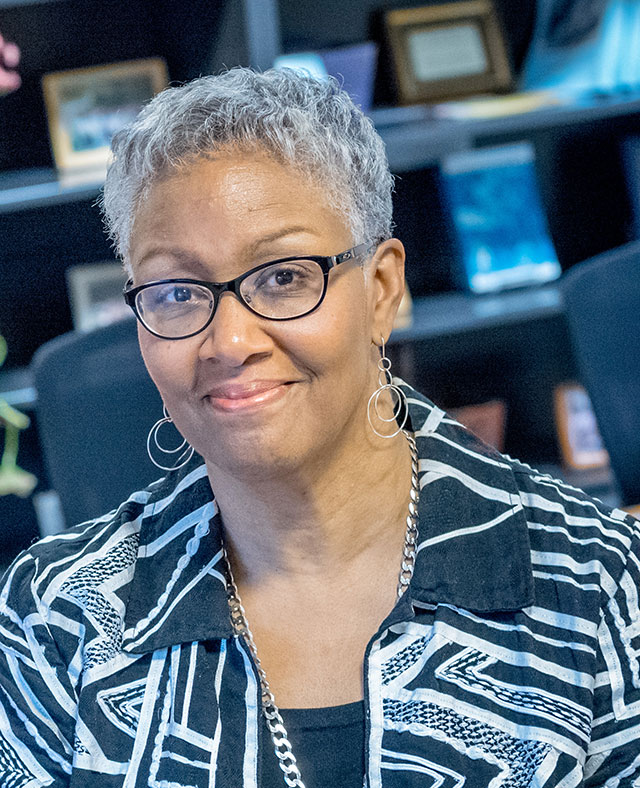
“Montclair State is again in the vanguard of teacher preparation and in helping to lead the recruitment and retention of teachers of color – as well as teachers for urban schools,” says Montclair State Center of Pedagogy Executive Director Jennifer Robinson.
The Recruiting Teachers of Color project will extend the work of the University’s innovative Newark-Montclair Urban Teacher Residency Program – a site-based teacher certification program for college graduates and career changers committed to urban education.
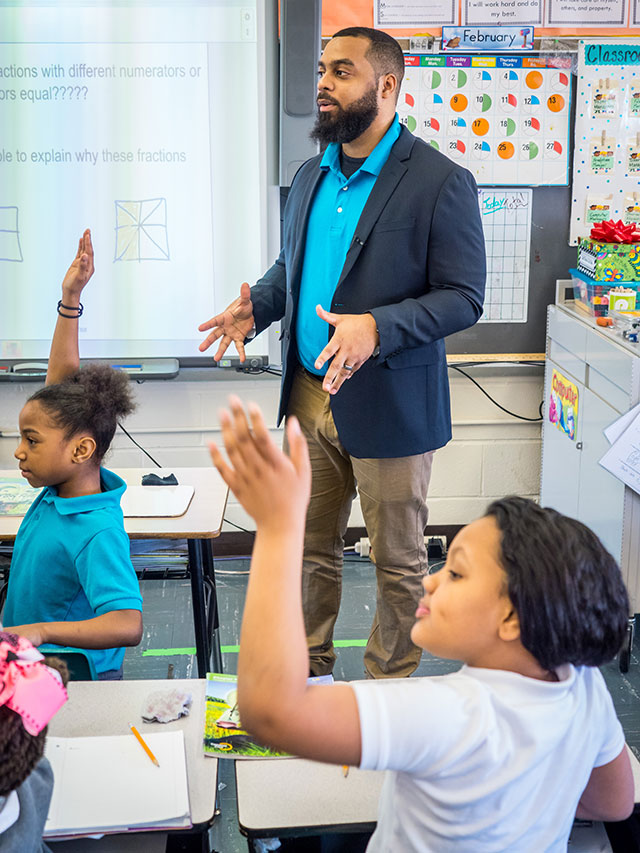
Robinson explains, “While it will serve as a model for other programs across the state, most importantly, it will help us learn more about how to do this work so that we can increase the diversity of the New Jersey teacher population.”
In February, Montclair State, Newark Public Schools and the American Federation of Students joined forces to launch the Newark Public Schools Teacher Academy.
It is the first in a planned series of high school academies that will prepare Newark Public School students for careers in education and grow a pipeline of diversity for the state’s teacher workforce.
The launch began the planning phase for the Teacher Academy, which is set to open in 2020. The University will help design a curriculum that prepares students for teaching careers, as well as provide instruction by professors and internship opportunities.
“What excites me the most is the brilliant mix of talented and enthusiastic professional staff and faculty – including Secondary and Special Education professors Mayida Zaal and Tanya Maloney and Early Childhood and Elementary and Literacy Education Professor Bree Picower – who are working on these projects, with energy, commitment and focus,” says Robinson.
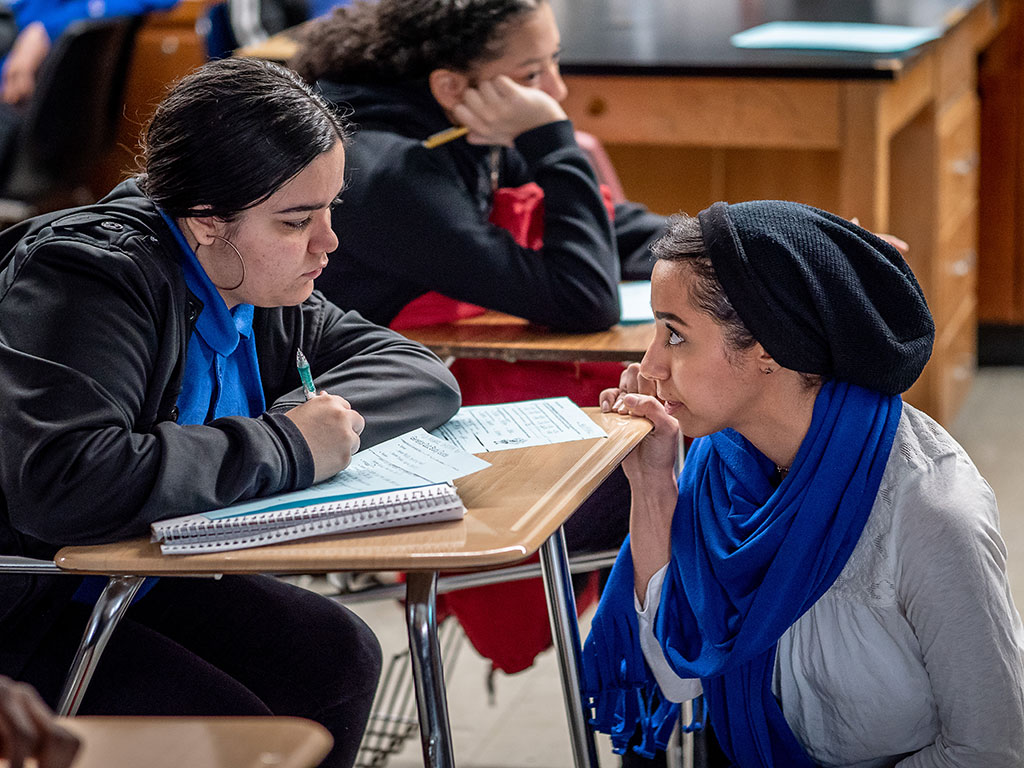
Developing new treatments for malaria
Nearly half the world’s population risks contracting malaria after being bitten by mosquitoes infected with the single-cell parasite Plasmodium. In 2016 alone, according to Medicines for Malaria Venture estimates, 216 million cases led to 445,000 deaths worldwide.
The recent appearance of Plasmodium strains resistant to existing antimalarial drugs has sparked an urgent search for new antimalarial agents.
David Rotella, Sokol Professor of Chemistry; John Siekierka, Sokol Professor of Medicinal Chemistry and director of the University’s Sokol Institute for Pharmaceutical Life Sciences; and Rutgers University researchers are sharing a three-year, $1.5 million award from the National Institutes of Health’s National Institute of Allergy and Infectious Disease (NIH NIAID) to do just that.
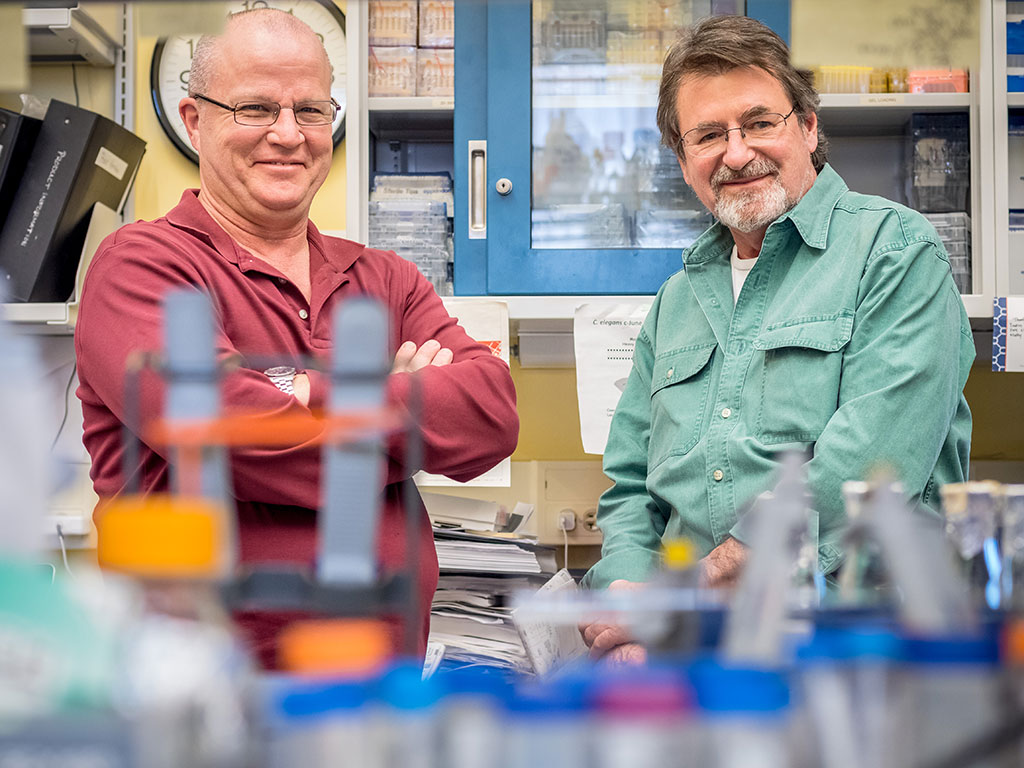
“We’re investigating inhibitors of a protein kinase in Plasmodium that plays multiple roles in its life cycle,” explains Rotella. “We hope to confirm if this enzyme can inhibit the parasitic life cycle of Plasmodium at more than one point. If we can show that, it may be possible to combine this with other antimalarial drugs to treat infection and reduce – or very hopefully – prevent resistance from developing.”
The researchers have begun to prepare new compounds to identify potent inhibitors of the protein kinase. “Our most potent compounds are now 10 times more active compared to our starting points – and are also active in cell-based assays.” Rotella notes that precision and reproducibility have been improved by optimizing the enzyme assay technology.
While the researchers aim to improve both their compounds’ activity and drug-like characteristics, and identify and test at least one molecule in animal models of malaria in the grant’s remaining years, Rotella is pleased with initial results. “So far, the results support our idea that this enzyme is a good target to explore for the treatment of malaria.”
Keeping water clean after a disaster
Water crises such as Puerto Rico’s in the aftermath of Hurricane Maria are often unfortunate results of today’s increasingly frequent and severe natural disasters. Yet clean water is essential for survival and relief after catastrophic natural disasters.

Earth and Environmental Studies Professor Yang Deng took a holistic approach to devise an innovative emergency water treatment that uses ferrate – an emerging and multifunctional treatment agent – to remove contaminants from disaster-polluted waters and prevent the spread of water-borne infectious diseases. His affordable solution is safe, easy to use and suitable for home and community use.
“I was inspired by my personal experience with hurricanes over the years and I deeply understand different emergency needs – including water – after natural disasters,” says Deng. “I feel it’s an engineer’s responsibility to find real-world solutions for disaster-affected populations that support their survival.”
His research, which is supported by the University’s PSEG Institute for Sustainability Studies and the New Jersey Water Resources Research Institute, is recognized by the American Academy of Environmental Engineers and Scientists. In April, he was the 2019 winner of the Academy’s competitive Superior Achievement Award for Excellence in Environmental Engineering and Science.

Supporting clean energy development
The University’s Clean Energy and Sustainability Analytics Center facilitates research, analysis and outreach regarding clean energy development in the state, country and abroad.
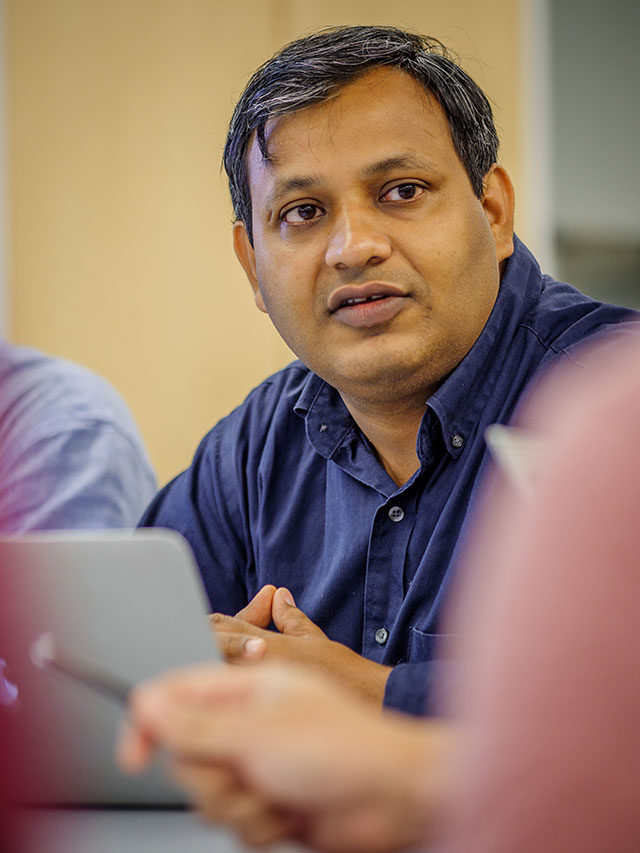
The Center’s programs and projects are funded, in part, by the PSEG Foundation; state agencies including the New Jersey Board of Public Utilities; organizations such as the Sediment Management Work Group; and ongoing National Science Foundation and U.S. Department of Agriculture grants.
The Center collaborates with faculty on numerous research projects. “For example, we’re working with School of Communication and Media Professor Anthony Pemberton on a film and education project documenting stakeholder perspectives on clean energy in India – and here in New Jersey,” says Center Director and Earth and Environmental Studies Associate Professor Pankaj Lal.
“We’re also working with Anthropology Professor Neeraj Vedwan on community acceptance of clean energy sources in New Jersey and with Mathematical Sciences Professor Eric Forgoston on emerald ash borer infestation in New Jersey and its use as a bioenergy source,” Lal adds.
Other Center-related research projects include Lal’s own explorations of place-based bioenergy sustainability and biomass-based biofuel development.

The Center also contributes to New Jersey energy and environmental planning through faculty-student research in clean energy and sustainability analytics and the development of state-of-the-art integrated economic models.
Lal says the Center is not only the future of energy in New Jersey by hosting events for policymakers, academics and other stakeholders such as the 2018 Clean and Sustainable Energy Summit, but also through a variety of education programs designed to cultivate tomorrow’s energy leaders.